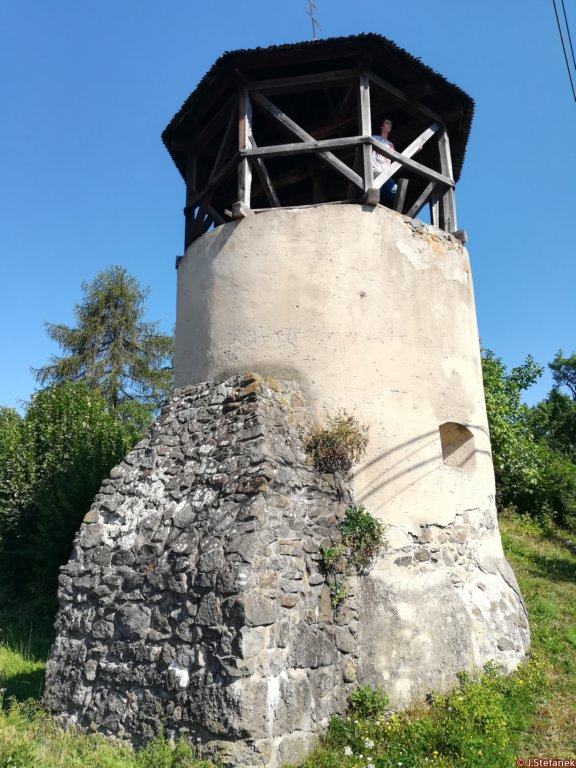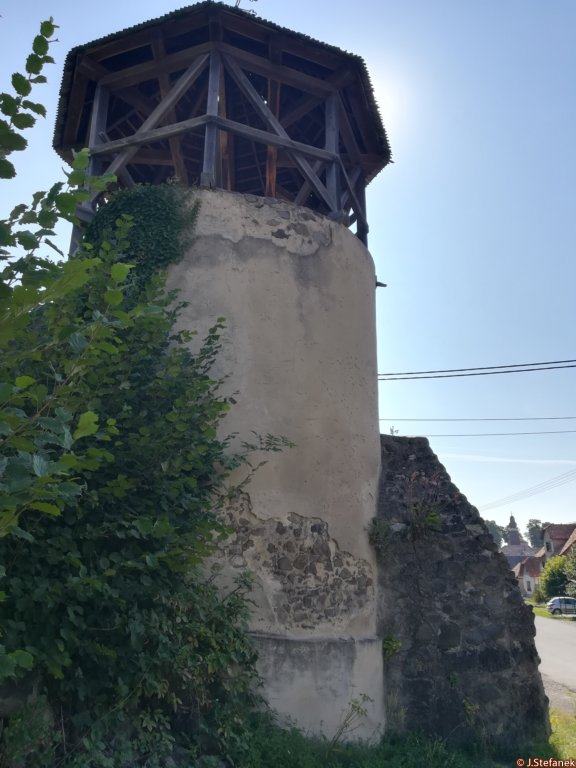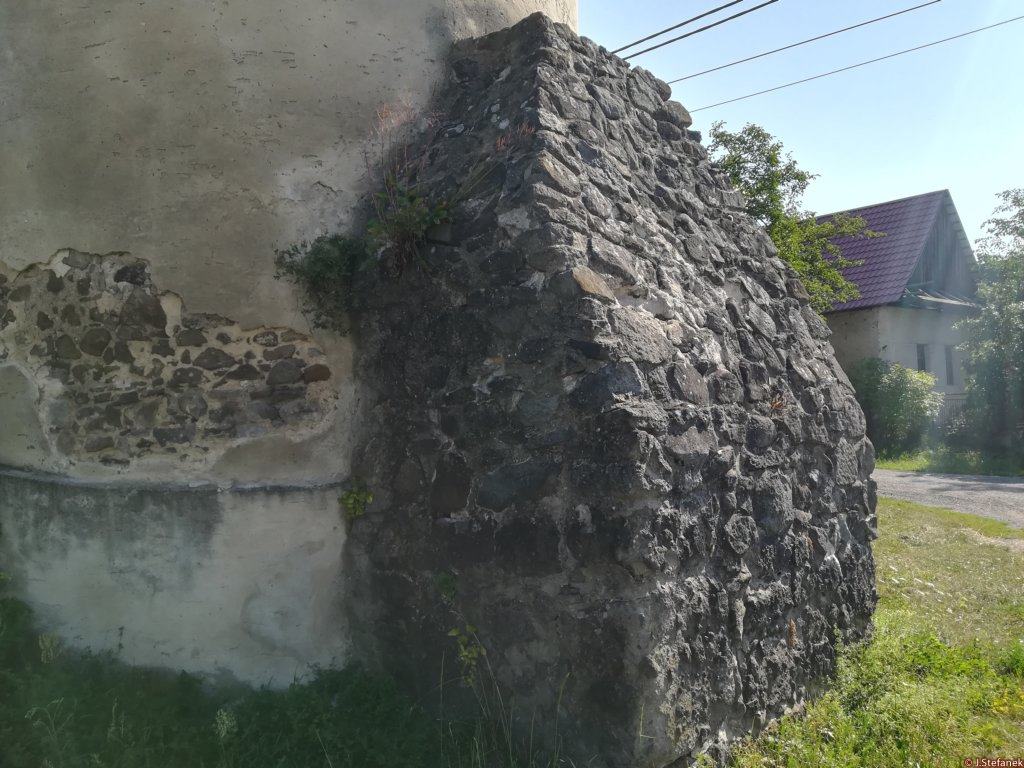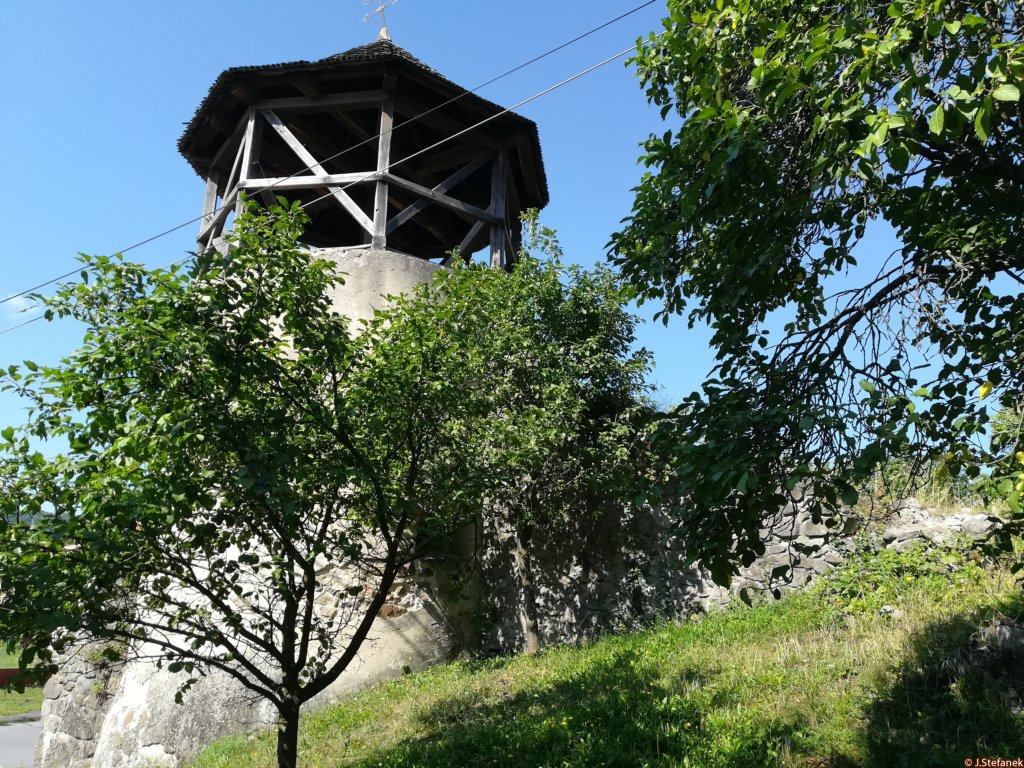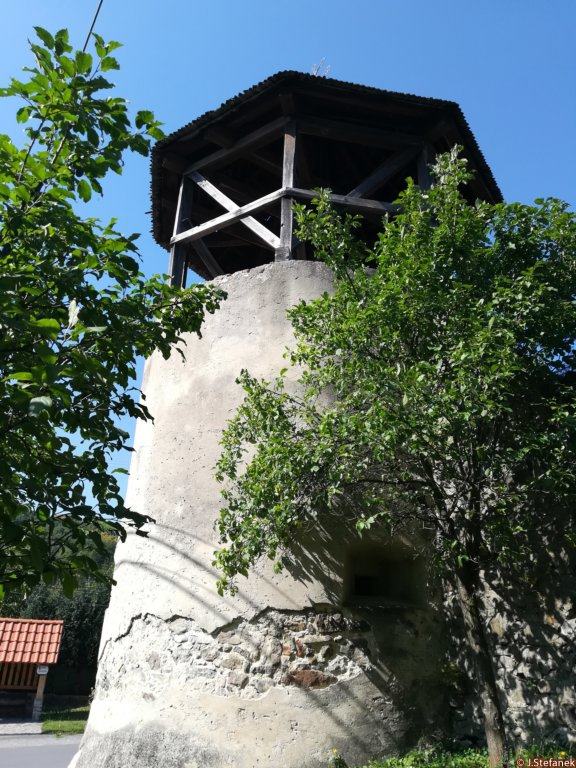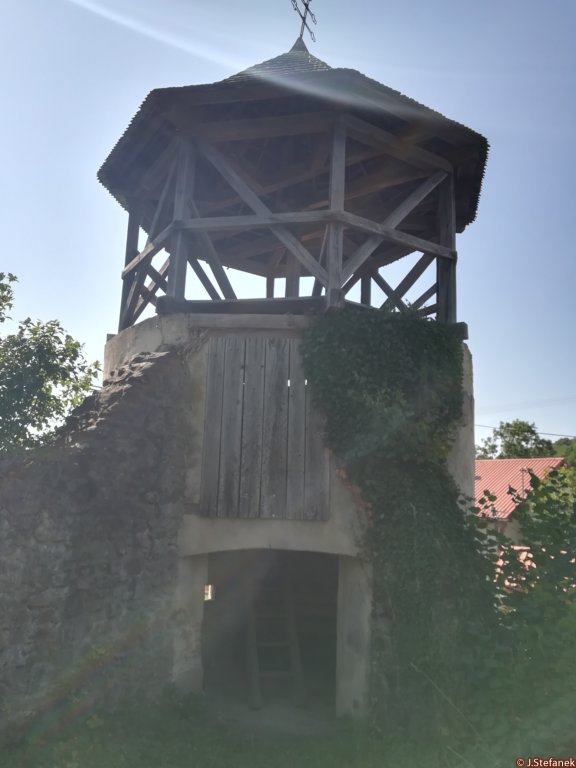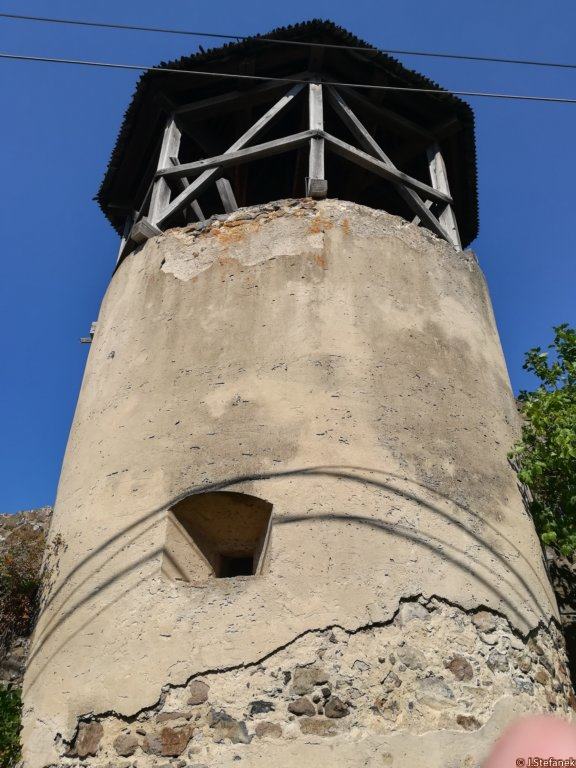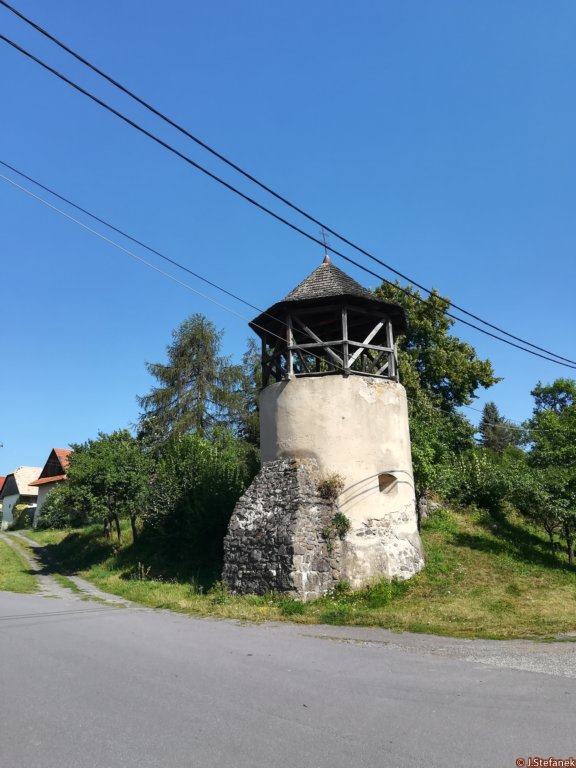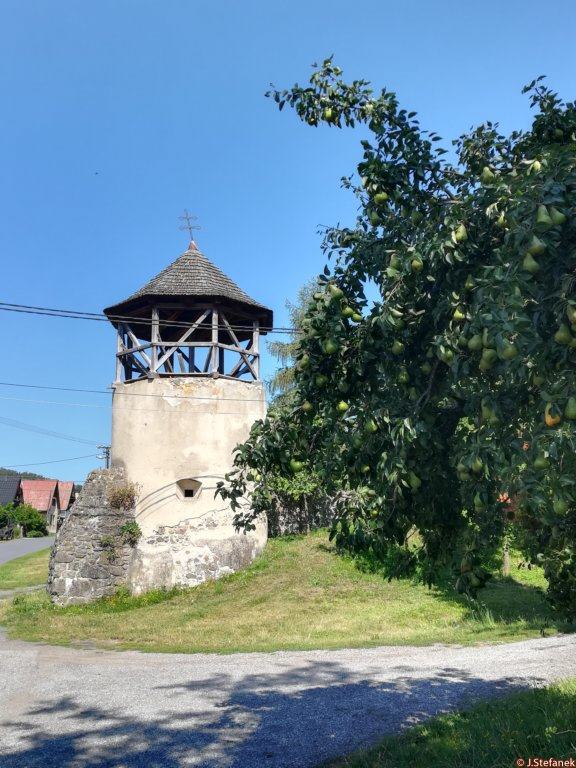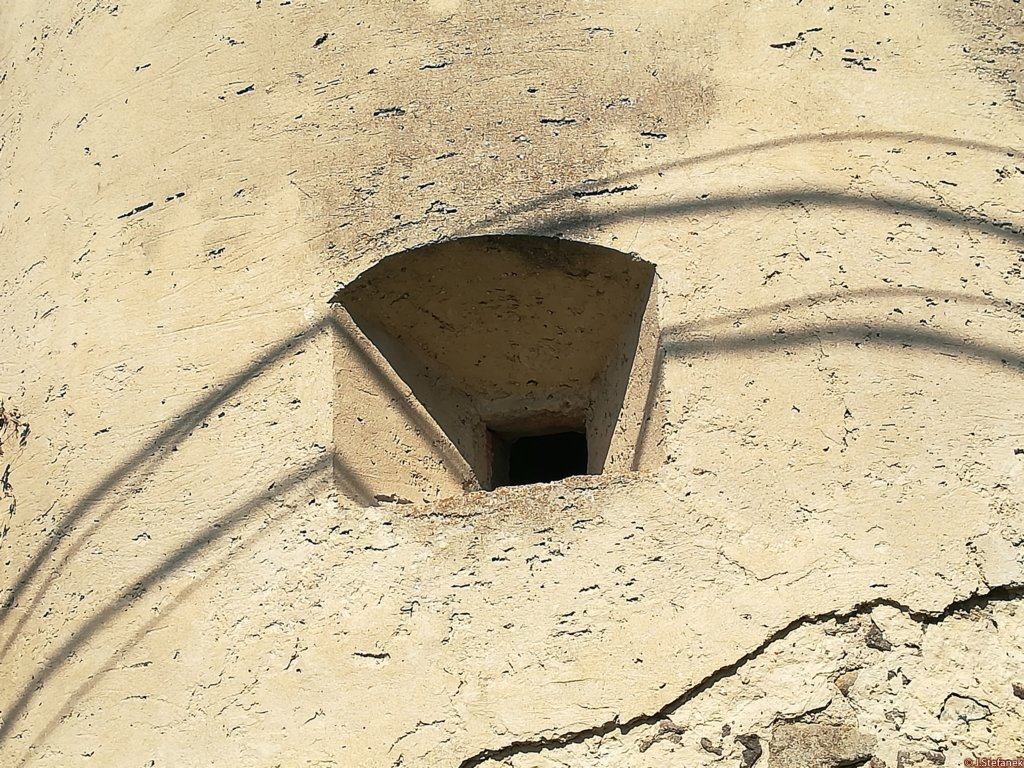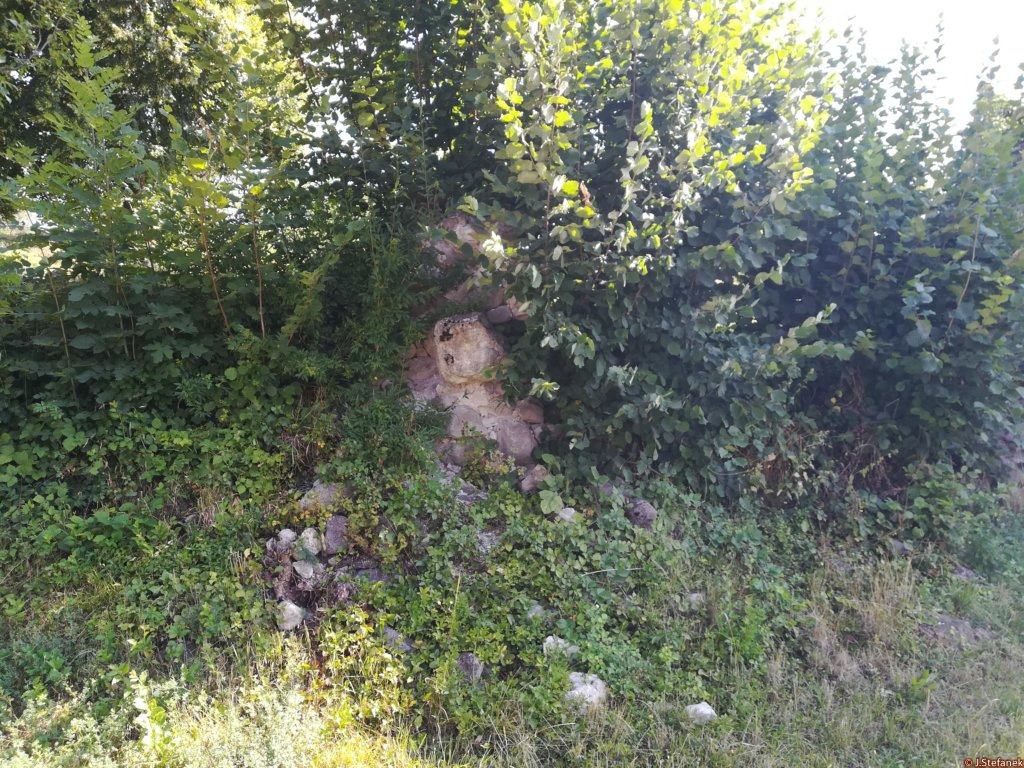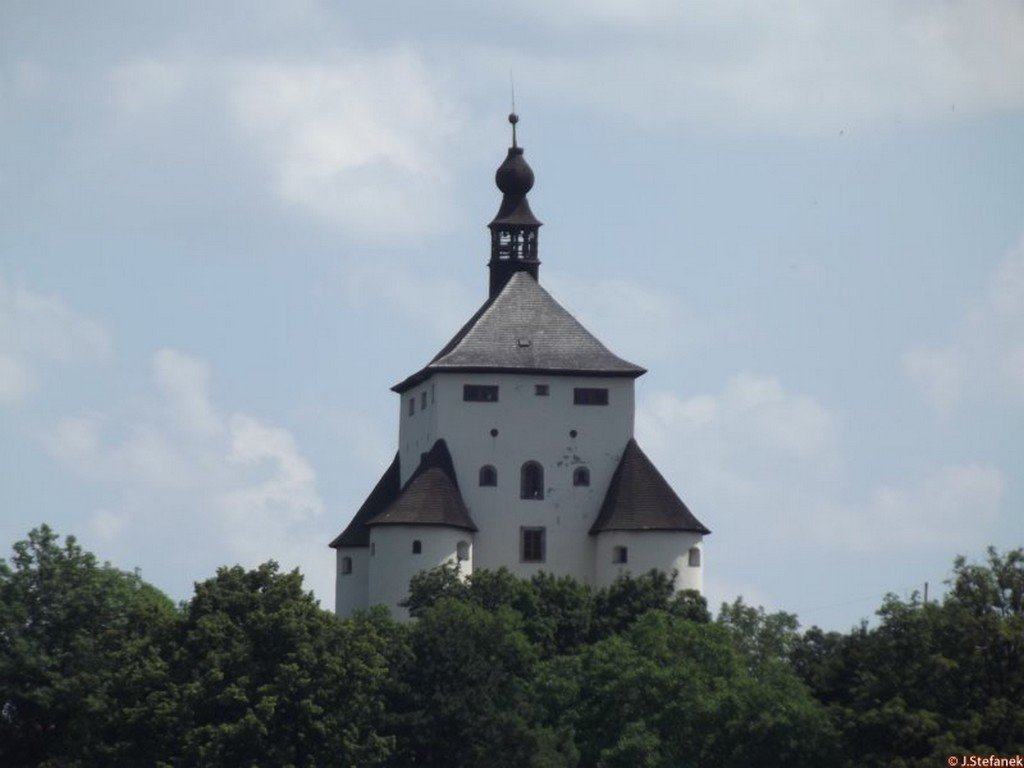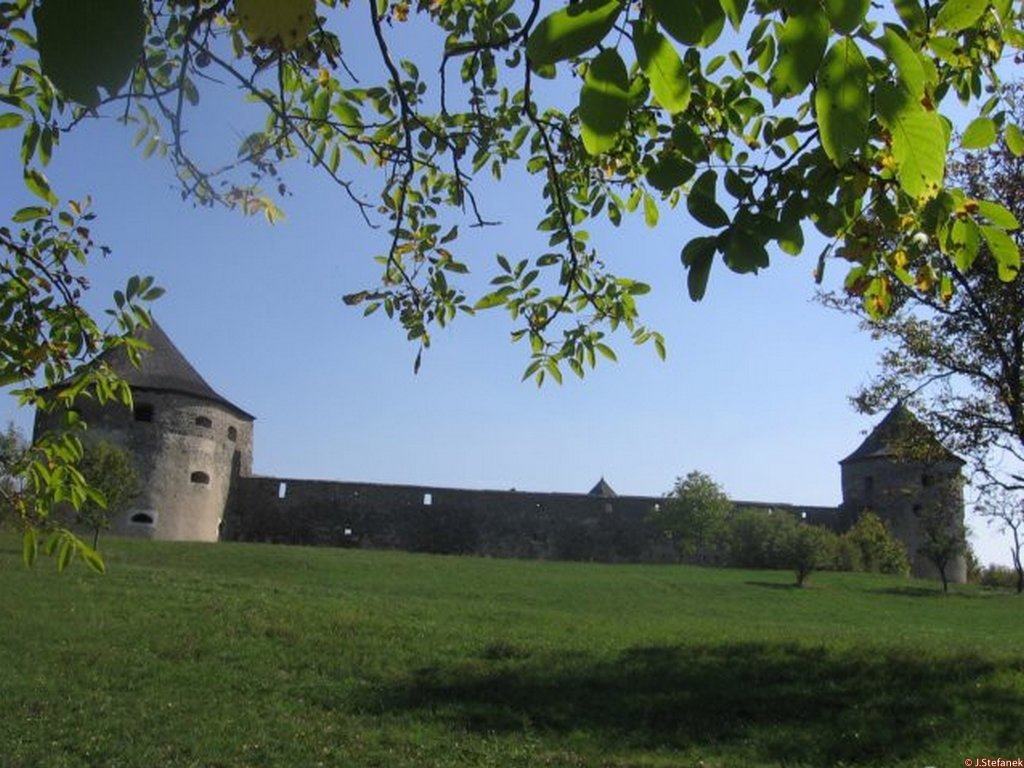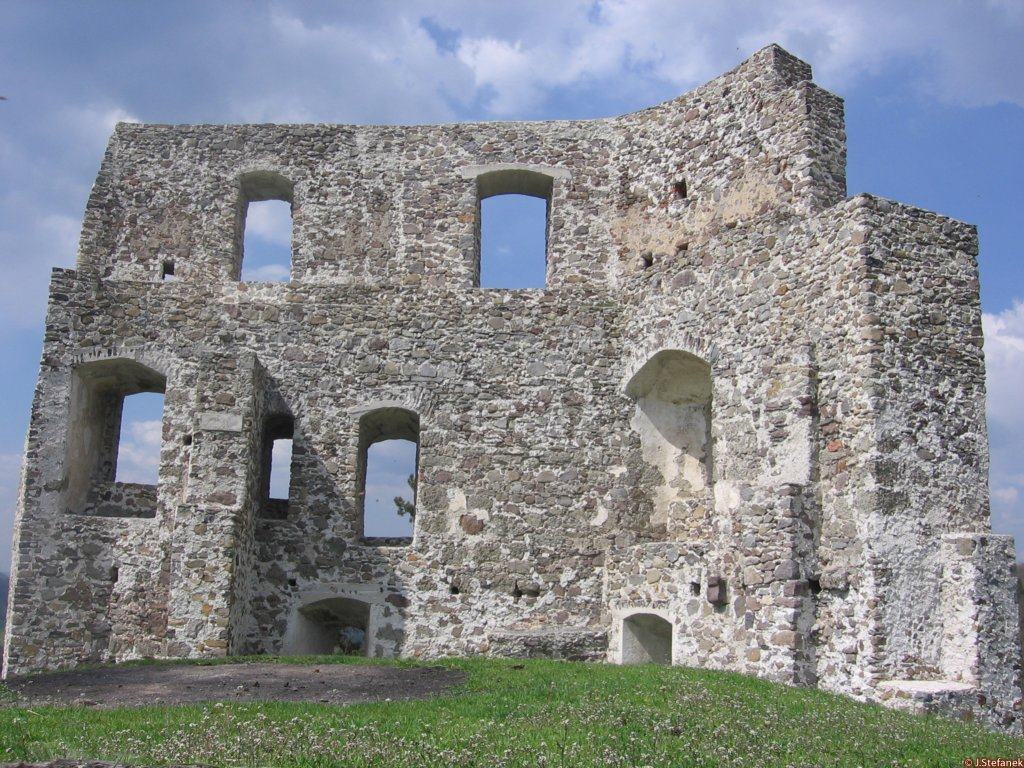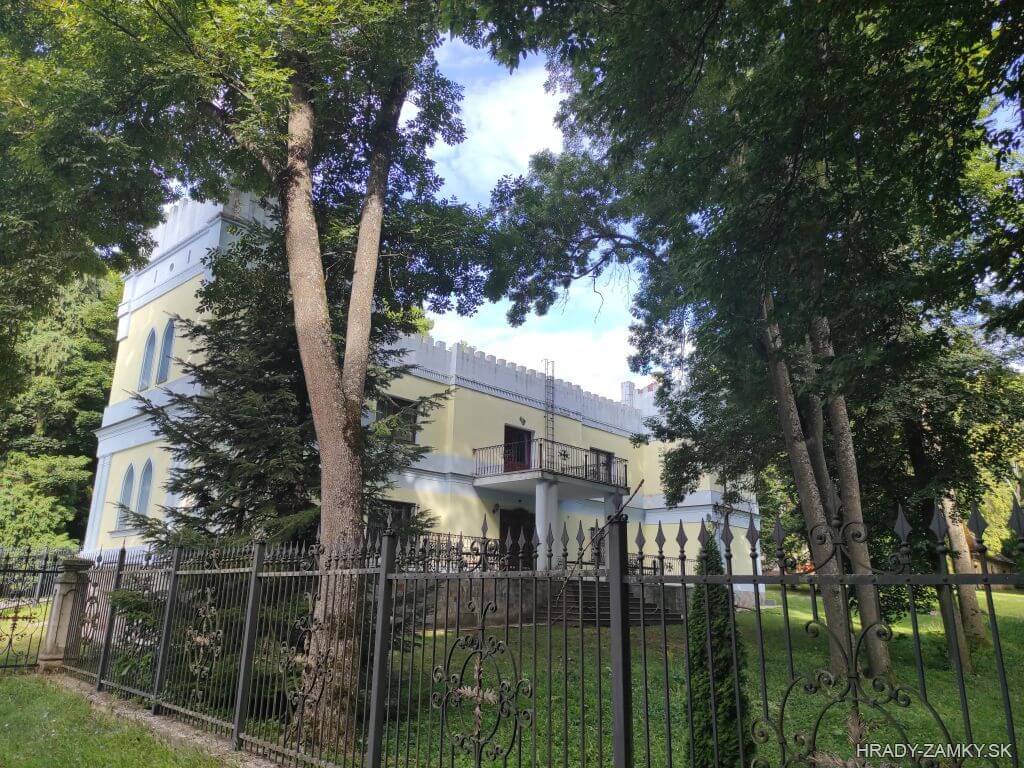Žibritov
Žibritov Banská Bystrica county Slovakia
watchtower
Žibritov
Žibritov Banskobystrický kraj Slovakia
strážna veža
Guard bastion, remains of the old anti-Turkish sconces, is located in the southern part of the interface Štiavnica Hills Cliffs, Sitno and Krupina plateau in the village Žibritov
Strážna bašta, pozostatok starej protitureckej pevnôstky, je situovaná v juhovýchodnej časti Štiavnických vrchov na rozhraní Skalky, Sitnianskeho predhoria a Krupinskej planiny v obci Žibritov
Previous names
Seurdfolua, Seweret, Sebrethfolua, Žibritowce, Zsibritó
Roads
Before the end of Krupina in the direction to Zvolen, turn left through Vajsov and continue along the road to the village of Žibritov, eventually from the opposite side immediately after entering Sv. Anton village we turn right. In the village Žibritov we do not come off the road leading through the village and approximately in the middle of the village, there is a bastion opposite the local office.Here we can park, the remains of the tower and fort are immediately next to road on a small hill.
Pred koncom mesta Krupina v smere do Zvolena odbočíme doľava cez Vajsov a pokračujeme po ceste až do obce Žibritov, prípadne z opačnej strany hneď po vstupe do Sv. Antone odbočíme doprava. V obci Žibritov neschádzame z cesty vedúcej cez obec a približne v strede obce, oproti miestnemu úradu sa nachádza bašta.Tu môžeme zaparkovať, zvyšky veže a pevnôstky sú bezprostredne pri ceste na malej vyvýšenine.
Description
The belfry has been preserved, originally a bastion of a fortified medieval church, of which only insignificant ruins have been preserved. It is a brick circular building with wooden superstructure.The church was fortified in 1582 in connection with the Turkish danger of the time. Until 2009, the bell tower also included a historic bell from 1680.
Zachovala sa zvonica, pôvodne bašta opevneného stredovekého kostola, z ktorého sa dochovali len nevýrazné ruiny. Jedná sa o murovanú kruhovú stavbu s drevenou nadstavbou.Kostol bol opevnený v roku 1582 v súvislosti s dobovým tureckým nebezpečenstvom. Súčasťou zvonice bol až do roku 2009 aj historický zvon z roku 1680.
Plan
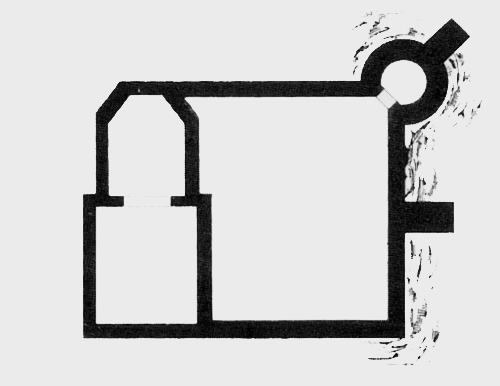
-
History
The first written mention of the village, which lies on the shortest road between two important mining towns Krupina and Banská Štiavnica, dates back to 1266. In this period it belonged to members of the Hunt-Poznan family. The church was built on a slight hill by the main road as a small single-nave building with a polygonal presbytery. Due to the fact that they have not yet carried out more detailed research here, experts only generally speak of the 14th or 15th century as the time when the building was built.
The Reformation period brought changes in church life and in Žibritov, when the local church was taken over by Protestants. The Turkish threat, which was fully manifested in 1576 by the burning of the village, led to the decision to fortify the church and turn it into a fortress. This happened in 1582 (the year 1586 is also mentioned). This fortification, probably also in connection with the lack of funds, goes beyond the common practice of building a wall around the church and adding a bastion or bastions. In Žibritov, they used the church building directly on the north side and connected the fortress wall directly to the eastern wall of the presbytery and the western wall of the nave. In the south-eastern part, they fortified the fortifications with a cylindrical bastion that has been preserved to this day. It later served as a bell tower.
Until 2009, a bell from 1680 hung in it, which was made in the well-known Viennese workshop of bell-maker Balthazar Herold. It seems to have been made by the owners of the manor, the Koháry family, probably in connection with the takeover of the church by the Catholics. In addition to this bell, there was also an older one, still from 1595.
Prvá písomná zmienka o obci, ktorá leží na najkratšej ceste medzi dvoma významnými banskými mestami Krupinou a Banskou Štiavnicou, je už z roku 1266. V tomto období patrila členom rodu Hunt-Poznanovcov. Kostolík na miernej vyvýšenine pri hlavnej ceste postavili ako neveľké jednolodie s polygonálnym presbytériom. Vzhľadom na skutočnosť, že tu dosiaľ nerealizovali podrobnejší výskum, odborníci len všeobecne hovoria o 14. či 15. storočí ako čase vzniku stavby.
Obdobie reformácie prinieslo zmeny v cirkevnom živote aj v Žibritove, keď tunajší kostolík prevzali protestanti. Turecká hrozba, ktorá sa naplno prejavila v roku 1576 vypálením obce, viedla k rozhodnutiu opevniť kostolík a premeniť ho tak aj na pevnôstku. K tomu došlo v roku 1582 (uvádza sa aj rok 1586). Toto opevnenie, zrejme aj v súvislosti s nedostatkom finančných prostriedkov, sa vymyká bežnej praxi, kedy postavili múr okolo kostola a doplnili baštou či baštami. V Žibritove využili na severnej strane priamo objekt kostola a pevnostný múr napojili priamo na východnú stenu presbytéria a západnú stenu lode. V juhovýchodnej časti opevnenie zosilnili dodnes zachovanou valcovou baštou. Tá v neskoršom období slúžila ako zvonica.
Až do roku 2009 v nej visel zvon z roku 1680, ktorý bol vyrobený v známej viedenskej dielni zvonolejára Baltazára Herolda. Ten dali podľa všetkého zhotoviť majitelia panstva Koháryovci, a to zrejme v súvislosti s opätovným prevzatím kostola katolíkmi. Okrem tohto zvona sa tu nachádzal aj jeden starší, ešte z roku 1595.
Myths and legends
There are no myths available.
K tomuto objektu nie sú dostupné žiadne povesti
Useful information
The ruins are freely accessible
Zrúcanina je voľne prístupná
Nearby castles
